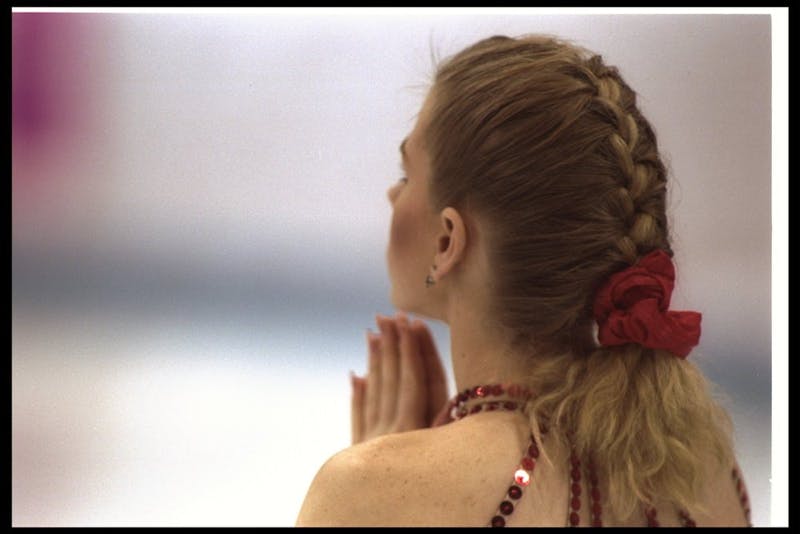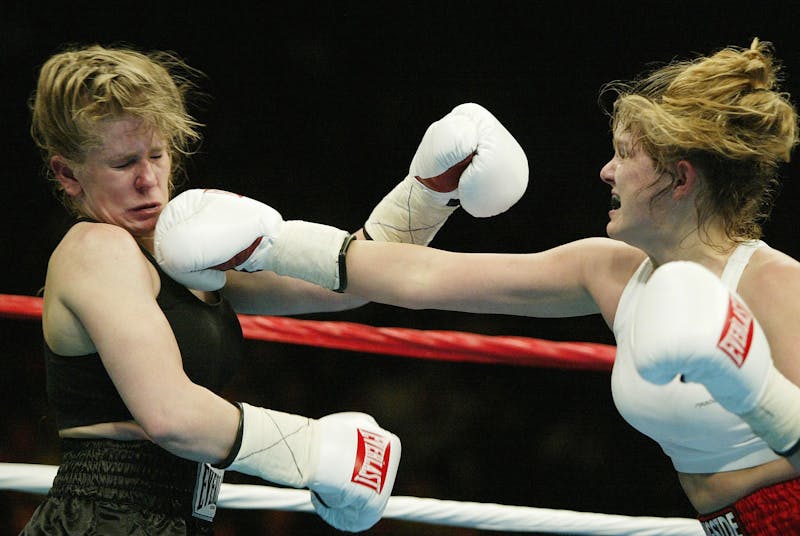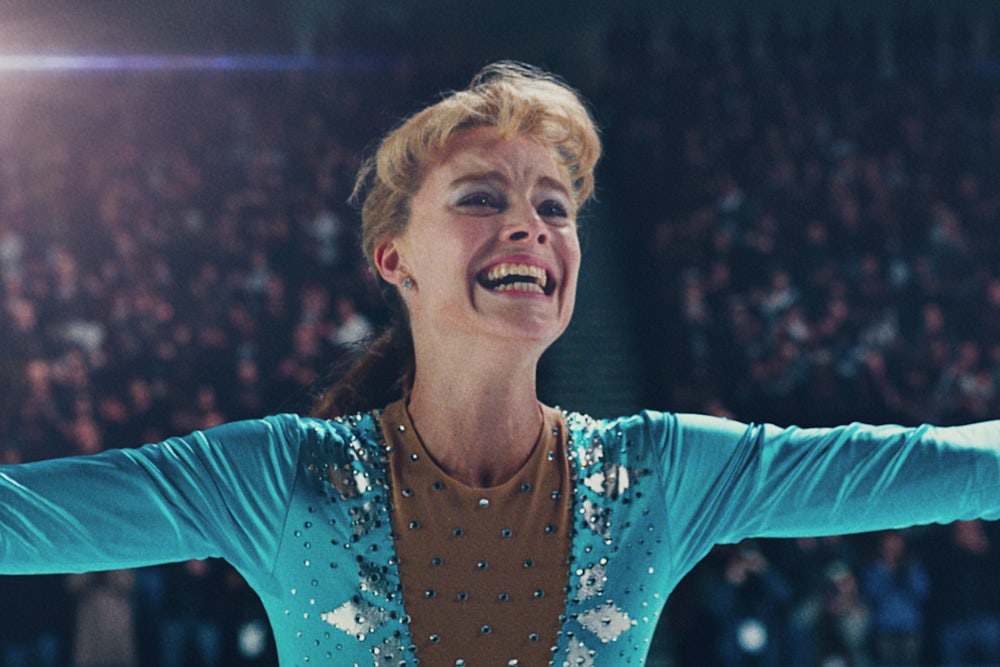I’ve never seen somebody smoke inside an ice rink before. But then I’ve also never seen a definitive account of what happened between Tonya Harding, Nancy Kerrigan, Jeff Gillooly, and Shawn Eckhardt on January 6, 1994. Both unusual sights came courtesy of I, Tonya, the new biopic of Harding. The smoking was done by Allison Janney as Lavona, Harding’s mom, who beat and humiliated her supposedly in order to extract her best performances. (“She skated better when she was enraged,” we learn.) These details come from testimony by Gillooly, Harding’s ex, who also beat our ice-dominating heroine during their awful marriage. From his lips the screenwriter Steven Rogers has put together the who, how, and why of Kerrigan’s notorious beating in the hallway of a Detroit ice rink.
Harding herself apparently had nothing to do with it—the beating was the result of botched communications between Gillooly, his idiot friend Shawn, and some thugs they’d hired. But she was convicted of obstructing the investigation after the 1994 Lillehammer Olympics, and her career on ice was abruptly cancelled. “I ruined her career,” Gillooly (played by Sebastian Stan) says in I, Tonya.
The narrative certainty in this movie marks it as distinct from the 2014 ESPN 30 For 30 special “The Price of Gold,” which reignited interest in the Harding legend but featured no Gillooly. Though that documentary made no claim to solving the mystery of the Kerrigan-bashing, it was compelling precisely for its genre features. We saw Harding herself on screen, laughing, holding fast to her version of events, with occasional and delightful lapses into badmouthery. In between, there was archival footage of Harding on the ice. Good though her avatar Margot Robbie is in I, Tonya (helped by stunt actors and special effects artists), the on-ice action of the new movie will never match the thrill of the real thing.

Harding completed a triple axel in the U.S. Figure Skating Championship in 1991—the first woman to do so—and it is very special to watch. Ice skating is great to listen to, as well. Harding’s superathletic and aggressive style sounded distinctive, raspy. When she lands from a big jump the sound is like ice being sculpted with a saber. Moving that fast on ice is very dangerous and very cool. It is not as dangerous and cool when it is not being done for real.
That documentary also enjoyed a great deal of archival press footage, since the Harding-Kerrigan scandal was one of the first perma–cable stories. Journalists hounded Harding day and night, with one unscrupulous hack calling a service to tow her van, just to get her out of the house. The story was huge. Kerrigan and Harding were both talented working class athletes, but the judges favored Kerrigan for her Brooke Shields elegance and styling. Harding, although the more powerful skater, liked to dance to ZZ Top. And of course, there is the famous footage of Kerrigan right after she was batoned in the thigh by a hired goon. “Why? Why?” she screeches, laid out on the corridor floor.

In place of the real thing, I, Tonya injects style. Riffing on the narration-plus-archival-footage technique in “The Price of Gold,” director Craig Gillespie (Lars and the Real Girl) weaves talking-head voiceovers into flashback scenes. A character will occasionally turn to the camera during a contested event and say, “This didn’t happen.” Even better is a glorious training montage during Harding’s second run at the Olympics. “She actually did this,” her coach Diane Rawlinson (Julianne Nicholson) tells us, as Tonya runs up a mountain with two water coolers strung milkmaid-style to a pole over her shoulders. The movie’s best line is “Shit is a dish best served never.” The movie’s best shot follows Tonya out the window of her abusive husband’s house and away, away, away down the lane.
There are aspects to this story that I, Tonya cannot catch. Robbie is a solid comic actor, but she’s too pretty to play Harding. The actor who plays Kerrigan (Caitlin Carver) looks nothing like her. In this story the likeness matters, because the girlish coarseness of Harding’s features playing against Kerrigan’s delicacy was a crucial ingredient in their cable-saga enmity. Kerrigan bore an amazing similarity to two other beauties of the 1980s and 90s, Lara Flynn Boyle and Jennifer Connelly. Harding was whiter white trash, with her frizzy hair, braces, and love of bad rock. That’s mostly lost in the movie.

But I, Tonya survives those production difficulties due to the Shakespearean stakes of its real-life plot, as polar and duetto as Alexander Hamilton and Aaron Burr, or Al Capone and Bugs Moran. Harding is essentially a tragic antihero, a physical genius whose career was both created and destroyed by abusers: first her mother, then her husband. She was beaten and lied to and degraded at the same time that she very literally ascended to heights on the ice that no other woman had ever achieved. After her career was over, she tried boxing for two years, to little success. (In 2010 she did pull off one more feat, setting a land speed record for racing a vintage gas coupe, in a 1931 Ford Model A named “Lickity-Split.” Her love for fixing up trucks is emphasized in I, Tonya.)
When it all came tumbling down, the media subjected her to a second trial. “It was like being abused all over again,” Robbie-as-Harding says into the camera during an interview segment. “Only by you.” Harding’s story is perfect for a movie because it is full of plot twists, and consists of three major acts—childhood, extraordinary success, despair—that are framed through the lens of reminiscence. It is also built around a toothsome arc of the De Casibus Virorum Illustrium kind: The inevitable turn of fortune’s wheel must crush Tonya Harding, as it crushed King Arthur and Alexander the Great.
